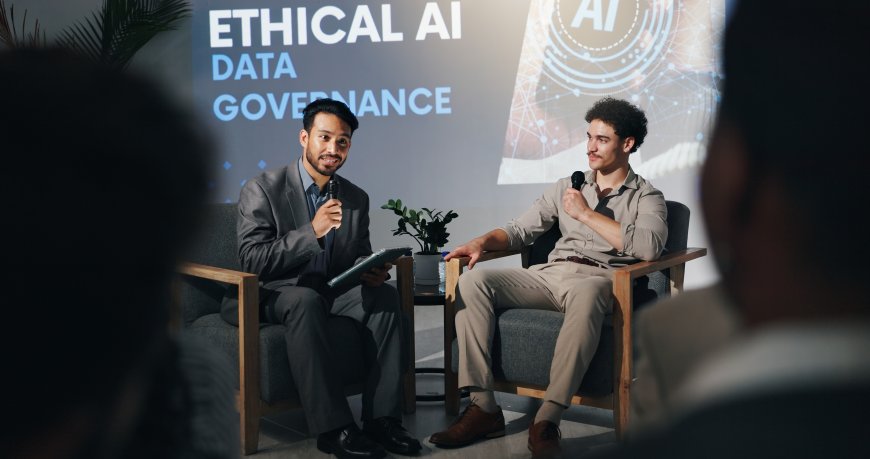AI Will Change How Marketing Works in 2026. Here's What Businesses Must Do to Adapt.
AI is set to redefine marketing in 2026. Learn how businesses can adapt strategies, improve targeting, and stay competitive in an evolving AI-driven marketing landscape.

Have you ever sensed that the internet was somehow anticipating your thoughts? You casually passed a particular subject, and out of nowhere, the entire advertisement and suggested reading list were just about what was in your mind. It's not magic; it's AI that is driving the changes in business!
There is a major disruption in the marketing field, and the change is principally due to the usage of Artificial Intelligence (AI). In just four years (2026), communication between companies and their customers, advertisement creation, and even sales tracking would be unrecognizably transformed. The old "one size fits all" is no longer valid.
This shift isn't just about using a chatbot. The concept of integrating generative AI technology in the business is to provide each and every customer with a personalized and real-time experience. Companies that embrace this technology early will be the winners; others will be just losers.

The AI Revolution: A Radical Change in Marketing
The key to this transformation is found in the two-fold increase in speed and volume. AI is capable of performing tasks in minutes that required an entire team several weeks to accomplish.
1. At Scale: Hyper-Personalization
Before, the meaning of personalization was inserting the recipient's name in the email's subject line. That's basic! Now, AI applications in business mean we can analyze your entire history—your clicks, purchases, even the time of day you browse—to create truly unique content.
Think about Netflix or Spotify. Not only do they suggest content that you have previously enjoyed, but the AI also understands your feelings and guesses what you might next want to see or hear. This is hyper-personalization, and it is being widely adopted in marketing, which creates custom ads and product descriptions for each user.
2. The Generative Content Machine
Generative AI in business is changing the creation process itself. Tools can now instantly write ad copy, design visuals, and even create product descriptions tailored to a specific audience segment.
If you're running a global ad campaign, AI can produce hundreds of video variations in minutes—each with different language, tone, and visuals for different countries. This drastically reduces the time and cost of content production, leading to huge benefits of ai in business.
3. The Rise of Conversational Commerce
By 2026, the customer journey will primarily involve talking. Conversational AI agents (such as chatbots and voice assistants) have evolved from mere question-answer systems into sophisticated assistants. According to experts, these AI agents will not only be the real growth drivers but also be capable of managing interactions that increase in number exponentially, thereby raising the order amounts through intelligent selling based on conversation.
The New Core: AI in Business Analytics
The single biggest change is happening behind the scenes, fueled by data. AI in business analytics is the engine that drives this new marketing world.
1. Predictive Analytics: Seeing the Future
Marketers are moving from reacting to data (looking at last month’s sales) to predicting what customers will do next.
-
AI analyzes billions of data points to spot patterns that humans would miss. It can predict:
-
Which customer is most likely to leave your brand (churn)?
-
Which product a customer will buy next (cross-sell).
-
The best time and price to show an ad for maximum ROI.
PayPal used predictive AI to identify inactive accounts that were likely to "churn" much faster. This allowed their marketing teams to jump in with targeted offers to retain those users, cutting analysis time from hours to minutes.
2. Mapping the Customer Journey in Real-Time
The customer journey used to be a static drawing on a wall. Now, it's a living, breathing thing tracked by AI.
AI in business analytics uses machine learning (ML) and Natural Language Processing (NLP) to analyze customer reviews, social media comments, and support calls in real-time. It detects the moment a customer gets frustrated (a "friction point") and can trigger an automated, proactive response to fix it. This is why the benefits of AI in business include much higher customer retention.

What Businesses Must Do to Adapt
Survival in 2026 necessitates a new mental approach along with a new tool; it is a case of proper thinking to be able to successfully integrate AI into businesses. Here is your three-step plan for introducing AI into business successfully.
1. Step 1: Build a Clean Data Foundation
AI is only as good as the data you feed it. So if you put garbage in, you will get garbage out!
Companies have to put the money in Customer Data Platforms (CDPs) that are powerful. No more letting customer data live on separate spreadsheets and old systems. You require clean, accurate, and consolidated first-party data for training your AI models (data from your customers directly). Make sure your data gathering practices are ethical and completely compliant with the law concerning consumer privacy. Good communication builds trust, which is necessary to use AI for processing personal data.
2. Step 2: Train Your Team, Not Replace Them
AI will not replace marketers' jobs, but marketers who do not embrace AI will be out of work. The emphasis goes from performing the work to overseeing the AI.
Provide training that is centered on analytics skills. Your staff should be capable of reading an AI predictive report, understanding its recommendations, and communicating those insights into actionable strategic moves.
The new marketer’s role will be to take care of the human side: creativity, brand voice, and storytelling strategy. AI writes the text, while the human makes sure it's full of energy and originality.
3. Step 3: Start Small and Experiment Boldly
Don't try to change everything at once. Start with one area where you can measure immediate impact.
Try using a generative AI in a business tool to automate one small ad campaign for a month. Or, use an AI chatbot on your website to handle FAQs. This process of "test, measure, and adapt" is the only way to safely integrate AI applications in business into your core workflow.
Sephora, a prominent brand, initially employed easy chatbot quizzes to assist consumers in going through their vast product list, which eventually resulted in less confusion and thus led to better interaction.
The Competitive Advantage of AI in Business
The true benefits of AI in business are not just cost savings; they are the creation of a massive competitive advantage. The companies that successfully use this technology will deliver customer experiences that are so immediate and pertinent that the rivals will look like slow and cold customer interactions in comparison.
The marketing future is going to be personal, speedy, and automated. Your organization can secure its position as a conversation leader in 2026 by prioritizing data quality, constant learning, and operational integration with AI.
What's Your Reaction?
 Like
0
Like
0
 Dislike
0
Dislike
0
 Love
0
Love
0
 Funny
0
Funny
0
 Angry
0
Angry
0
 Sad
0
Sad
0
 Wow
0
Wow
0
























































































































































































